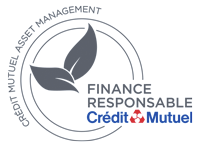Non-financial information: future challenges
The European Union’s Sustainable Finance Disclosure Regulation is among a series of regulatory measures adopted to create a harmonised environmental, social and governance framework for the European financial services industry. It is part of the UN 2030 Agenda for Sustainable Development. This regulation promotes the concept of double materiality: the financial entity must approach ESG in two ways, factoring in ESG risks and being transparent over the main negative effects that the entity itself can have on ESG considerations.
The regulation calls for standard periodic reporting to ensure transparency of information. This means having access to quality non-financial information from the companies in which investments are made, similar to basic financial disclosures. However, within the context of non-financial data, data legibility and stability (in terms of standards) still face operational difficulties in the resources provided to investors, in particular by specialist rating agencies.
Management consultancy Opimas estimated the ESG data market to be worth $617 million in 2019. With ESG data expected to grow by 20% and ESG indices by 35%, the market could be worth closer to one billion dollars by 2021. In terms of regional breakdown, 60% of spending on ESG data is in Europe, in response to the regulatory requirement.
Supply differs in whether the quantitative or qualitative raw data is provided “as is” or after work to make it more reliable and turn it into scores or non-financial ratings using predefined Key Performance Indicators (KPI).
While the correlation of the scores from the five main ESG rating agencies is thought to average just 0.61 (Massachusetts Institute of Technology study), the role of data providers is still vital at this point.
The fact remains that, once you go beyond the accounting figures of the companies analysed, collecting additional sustainability information to identify and analyse key risks and opportunities in order to calculate the intrinsic enterprise value is still a very precarious task. Indeed, the approach leaves plenty of room for qualitative and subjective assessment that, being based on factors that do not refer to a standard measurement of money (or the value of human capital, or biodiversity), will not resolve the value issue. Equally, how can we analyse backward-looking and forward-looking information concerning the commitment and goals reported by companies? Analysts therefore have an important role to play in ex-post monitoring, measuring the relevance of data.
The demands of the European regulation will cover this, bearing in mind that new alternative sources of data derived from artificial intelligence will increase companies’ publication of non-voluntary information.
Writing completed on 19/05/2021



